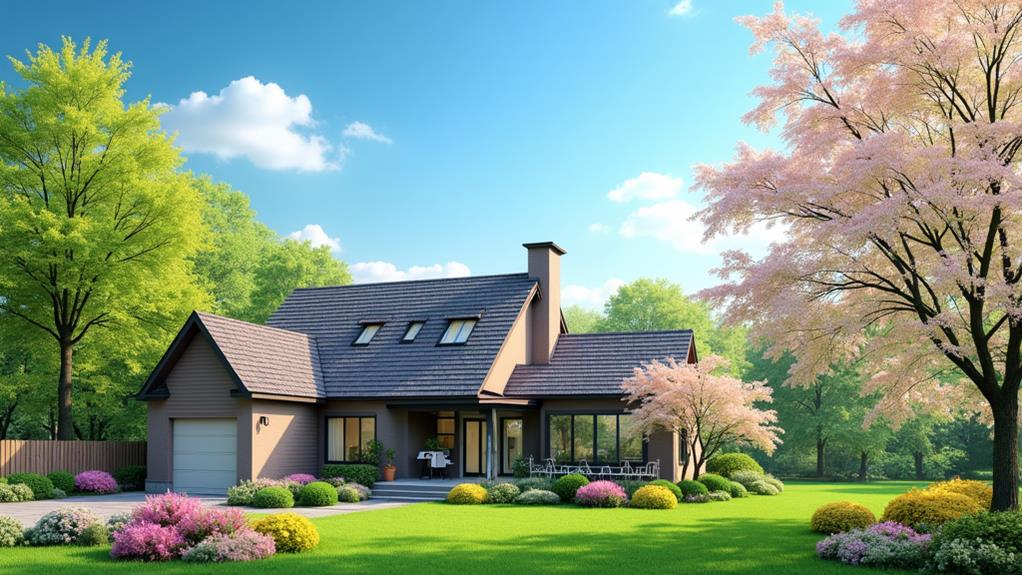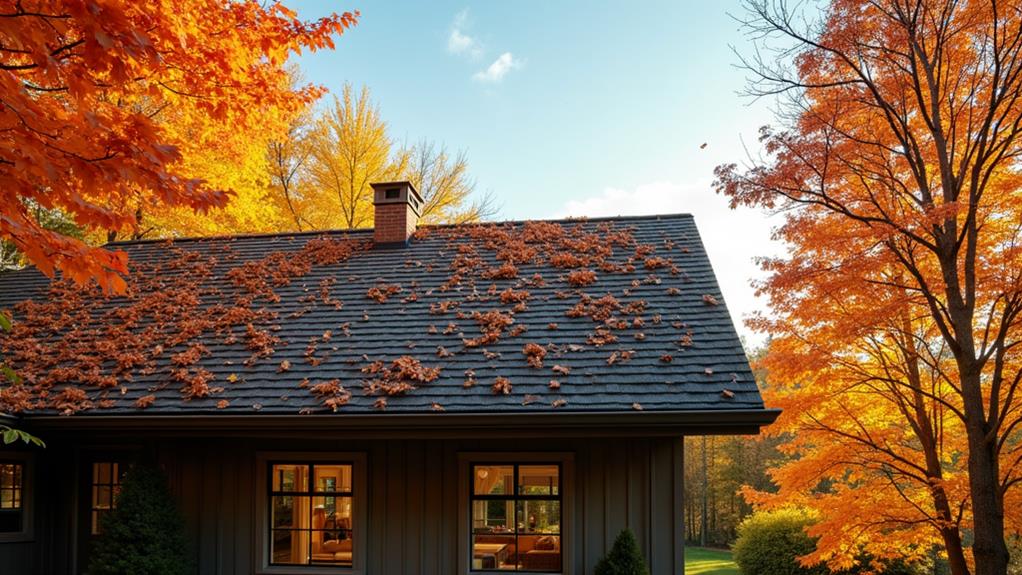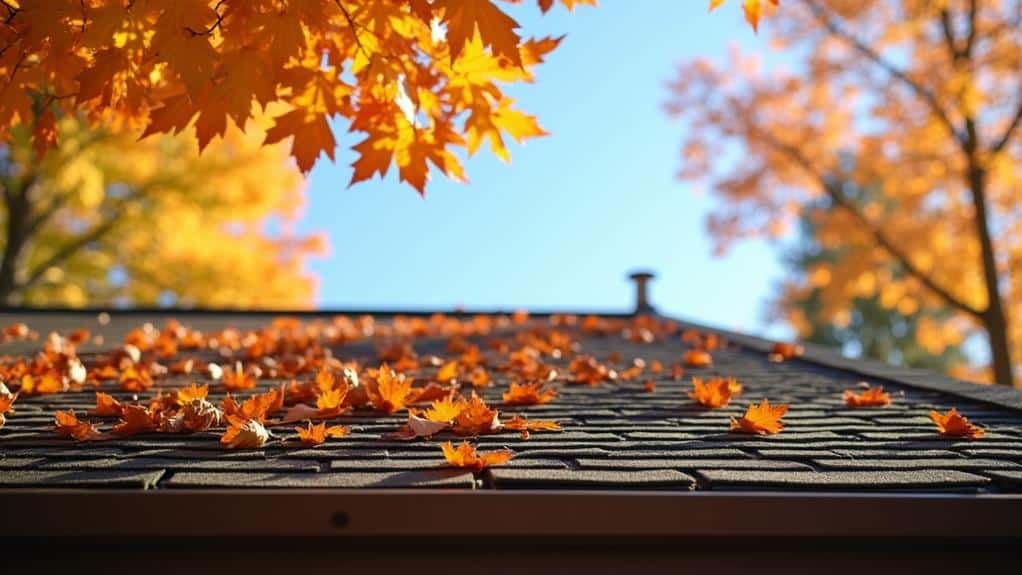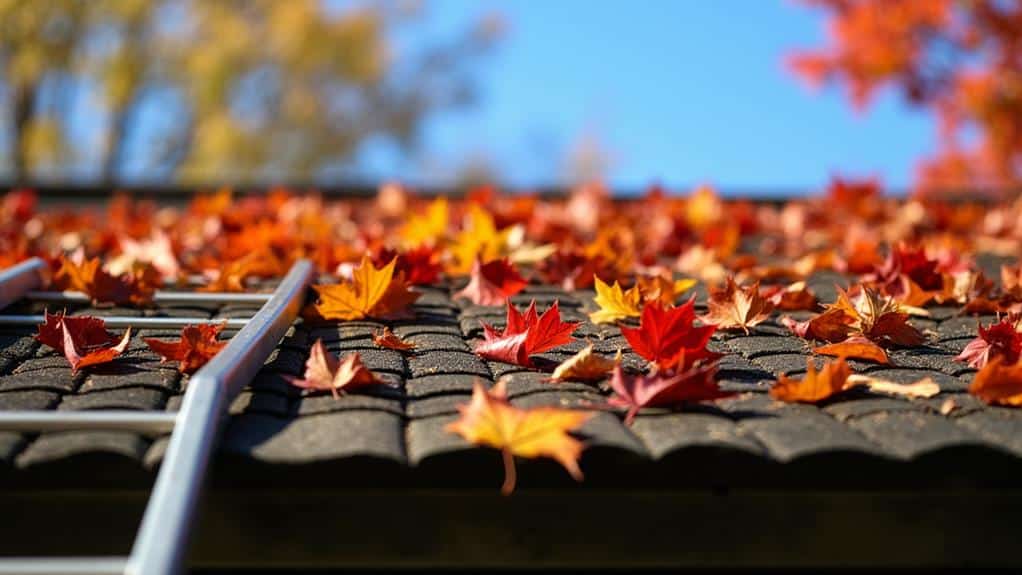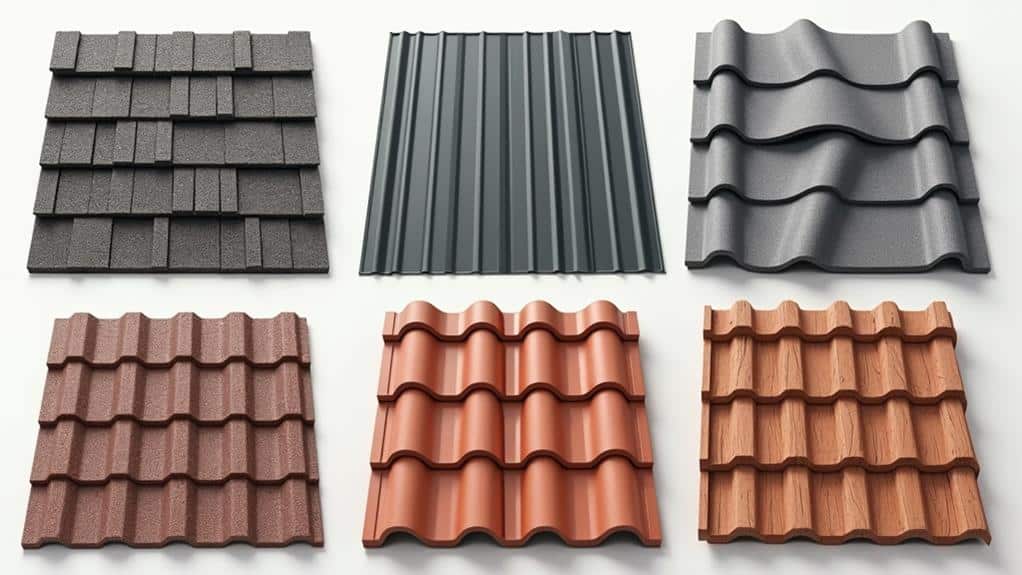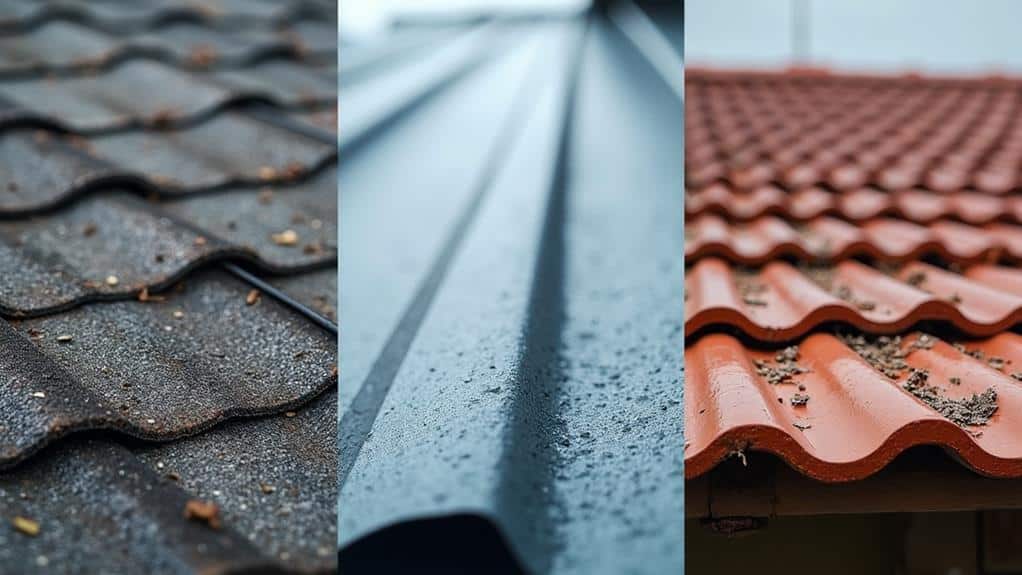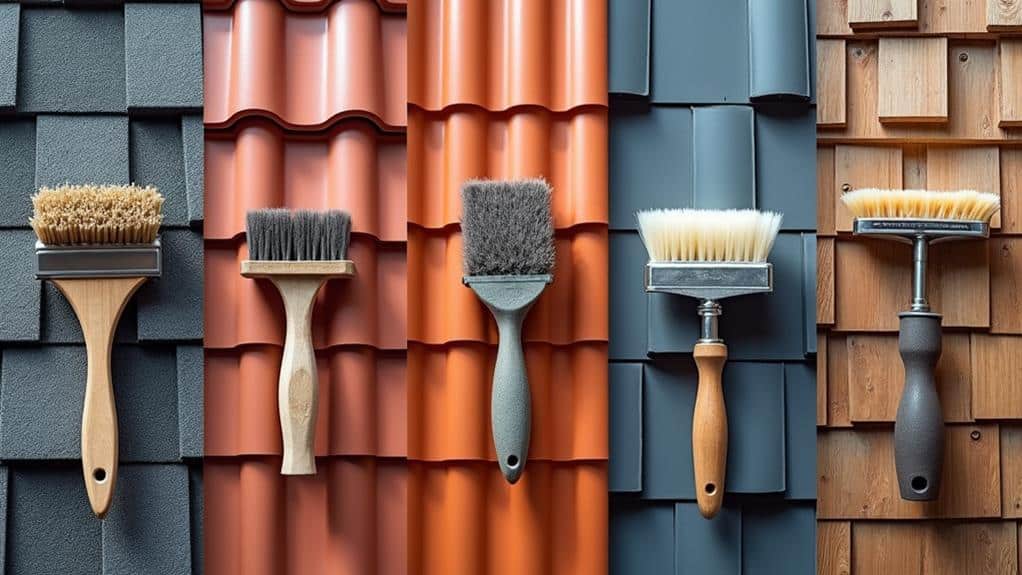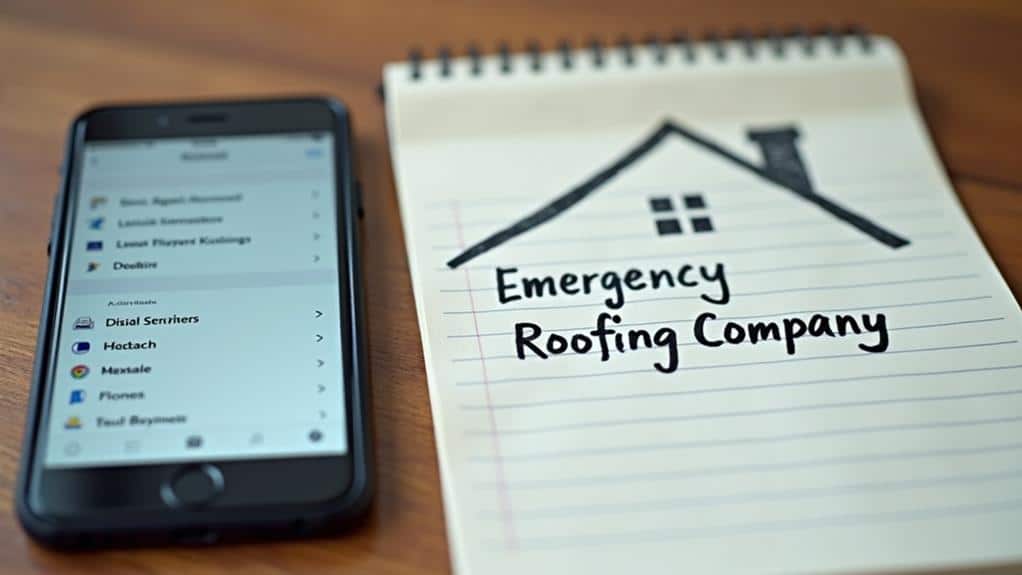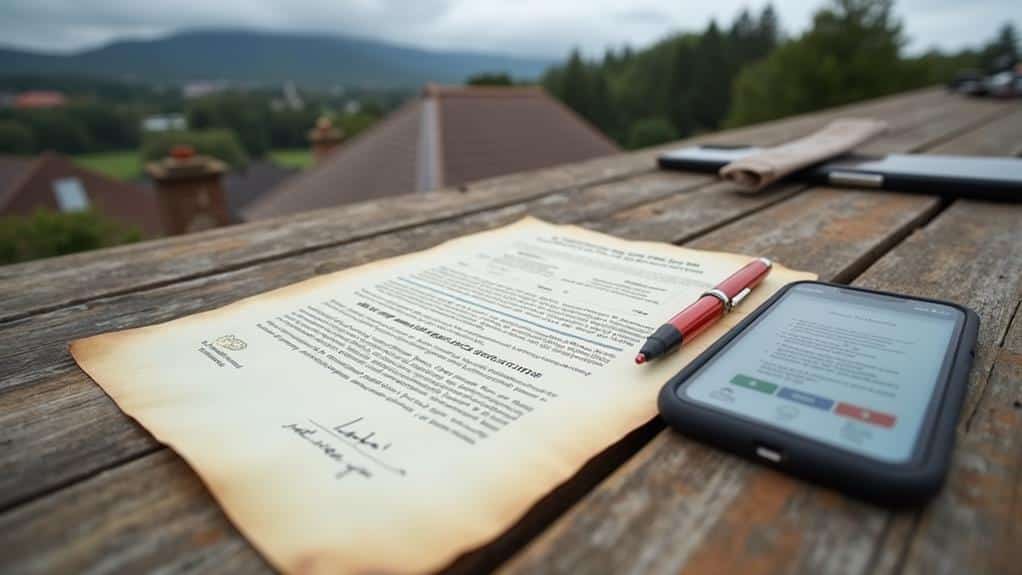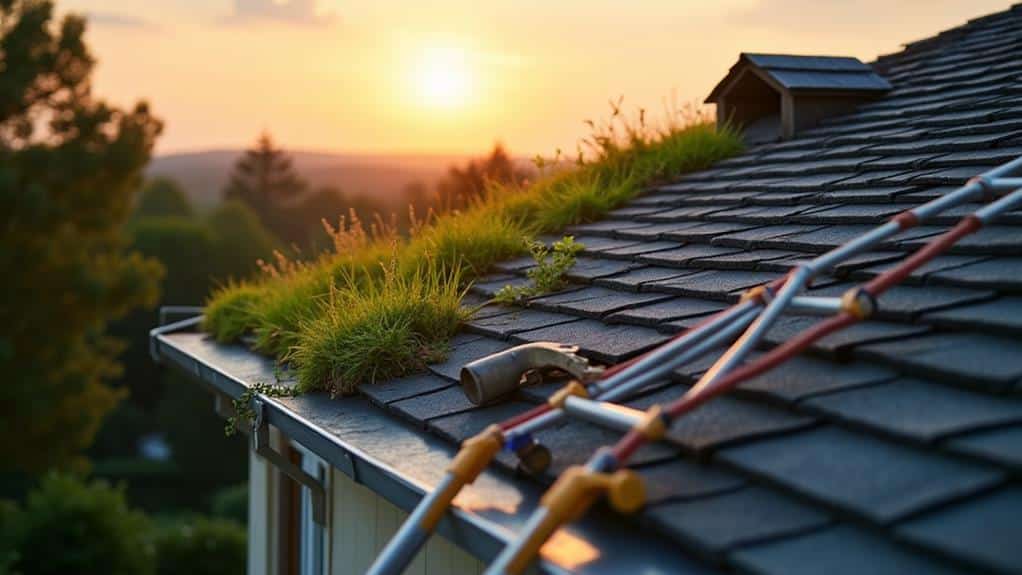Picking the right gutter material is key to keeping water away from your house and stopping damage. Aluminum gutters are light and don’t rust, making them tough, but they can get dents. Vinyl gutters cost less and need little upkeep, but sun and weather can make them fade and break. Copper gutters last very long—more than 50 years—and turn a pretty green-blue color over time, while steel gutters are strong but need special care to stop rust. Each type of gutter has good and bad points that affect how well they work and how much care they need, so you have many choices based on what your house needs. Learn more about how each type can help your home.
Key Takeaways
- Consider aluminum for lightweight, rust-resistant gutters that come in various colors and designs, but may dent easily.
- Choose vinyl if you seek a budget-friendly option; it’s easy to install but may fade and crack in extreme weather.
- Opt for copper gutters for their longevity and unique aesthetics, developing a patina that enhances appearance, though they require careful installation.
- Galvanized steel offers strength for heavy rainfall, requiring rust protection; stainless steel provides extended durability but is generally more expensive.
- Match the gutter style, such as K-style or half-round, with your home’s design to ensure both functionality and visual appeal.
Importance of Gutter Materials
Picking the right gutter material is key to keeping your home safe from water damage. The material you choose matters not just for looks, but also for how well your gutters work, how long they last, and how much care they need.
Take aluminum gutters – they won’t rust or break down from weather. Vinyl gutters don’t need much upkeep, but their color can fade as time goes by.
The type of material you pick will affect how well water moves away from your house, which helps protect both your home’s foundation and your yard. It’s also smart to think about how your choice affects the environment. Copper gutters can be recycled, though they cost more up front.
Vinyl gutters might be cheaper, but they’re harder to recycle, which isn’t great for the planet. Additionally, regular gutter maintenance is essential to ensure your chosen material performs effectively and lasts longer.
Overview of Gutter Types
Understanding different gutter types helps you pick the best one for your home’s needs and looks. Each type works differently and needs its own level of care.
Popular gutter types include:
- K-style gutters: Look like fancy crown molding and have clean lines.
- Half-round gutters: Old-style gutters that work well in rainy areas.
- Seamless gutters: Made to fit your home exactly, with fewer leaks.
- Box gutters: Built into the roof, common in modern houses.
Picking the right gutters affects more than how your house looks – it helps protect your home. Some types need more cleaning and checking than others to stop water damage and clogs. Assessing the condition of gutters can guide you in determining which type of gutter will best suit your needs and how much maintenance it will require.
The best choice will both protect your house and make it look better. Taking time to learn about each type helps you choose gutters that match your home and how much work you want to put into them.
Aluminum Gutters: Pros and Cons
Aluminum gutters are a common pick for homes because they last long and don’t need much upkeep.
They’re light and easy to put up, but you need to install them right to avoid problems like sagging or water leaks. When putting them up, make sure they slope the right way and are firmly attached to your roof’s edge.
One of the best things about aluminum gutters is that they don’t rust or break down, so they last longer than other types in most weather.
But they can get dents pretty easily, especially during bad storms or if something hits them. To keep them working well, clean them regularly. Take out leaves and dirt twice a year, check that water flows properly, and look for any holes or weak spots where pieces join together.
You can get aluminum gutters in many colors and designs to match your house.
They also come in seamless versions, which means fewer places where water might leak. Looking at these good and bad points can help you choose if aluminum gutters are best for your house.
Vinyl Gutters: Pros and Cons
Vinyl gutters help move rainwater from your roof while being easy on your wallet. Before you choose them, look at their good and bad points.
Good Points:
- Saves Money: Vinyl gutters cost less than other types, making them a good pick if you’re on a budget.
- Easy to Handle: Being light means they’re easier to put up and don’t put much weight on your house.
- Won’t Rust: Unlike metal, vinyl stays free from rust, helping it last longer.
- Many Colors: You can pick from different colors to match your house.
Bad Points:
Vinyl isn’t perfect. It can get weak and crack in very hot or cold weather, and the color can fade in the sun.
While these gutters need less care than metal ones, you still need to clean them often to stop leaves and dirt from blocking water flow and causing leaks.
Copper and Steel Gutters: An Analysis
Copper and steel gutters are both strong choices for keeping rain away from your home.
Let’s look at what makes each type special.
Copper gutters can last more than 50 years if you take care of them well. Over time, they turn a beautiful blue-green color, which not only looks nice but helps them fight off damage.
Steel gutters come in two main types: galvanized and stainless. Galvanized steel typically works well for about 20 years, while stainless steel can last over 30 years, depending on the weather it faces.
Steel is very strong, making it great for areas with lots of rain, but it can rust if not protected properly.
Each type needs to be put up differently. Copper pieces must be joined together by heating them, while steel parts need good sealing and paint to stop rust.
The upkeep is different too – copper needs cleaning now and then to stay shiny, and steel needs checking for rust spots.
When picking between copper and steel gutters, think about how long you want them to last, how strong they need to be, and how you want them to look on your house.
Frequently Asked Questions
How Do I Maintain Gutters Made From Different Materials?
Clean your gutters often by removing leaves and dirt, look for damage like rust spots, and check them regularly using a simple list. The way you take care of your gutters should match what they’re made of to help them work well and last longer.
Can I Combine Different Gutter Materials on My Home?
Yes, you can mix different gutter materials, but make sure they work well together to avoid leaks and damage. Think about how they’ll look, since different materials might not match your home’s overall look. Taking time to pick the right mix of materials will help your gutters work better and look better.
What Are the Best Colors for Gutters Based on Material?
Pick gutter colors that match your house’s outside look. Some materials give you more color options than others. For example, aluminum gutters come in many colors, while steel gutters have fewer choices. This helps you make your house look better from the street.
How Do Weather Conditions Affect Gutter Material Longevity?
Weather plays a big role in how long gutters last. Hot and cold shifts, along with rain and snow, can test how well materials hold up. Some gutters may bend, rust, or break down more quickly when exposed to harsh weather. Picking strong gutter materials helps them last longer, even when the weather keeps changing.
Are There Eco-Friendly Gutter Material Options Available?
Yes, you can find gutters made with materials that are better for the environment. Many people pick gutters made from used aluminum or copper that has been melted down and remade. These options help cut down on trash and make your home more earth-friendly.
Conclusion
In summary, choosing the right gutter material is essential for effective water management. Aluminum offers a balance of durability and affordability, while vinyl is lightweight and easy to install. Copper provides elegance but comes at a higher price, and steel is robust yet prone to rust without proper maintenance.
At MWCR Homes, we help homeowners assess their budget, climate, and aesthetic preferences to select the best option for their home. Making an informed decision guarantees your gutters function at their best for years to come.

